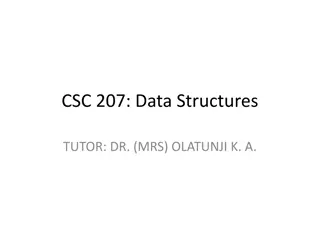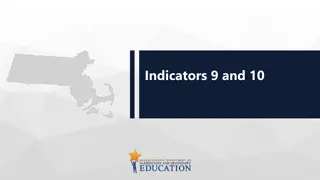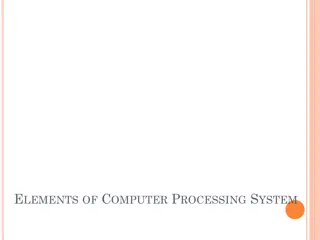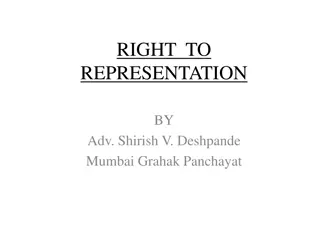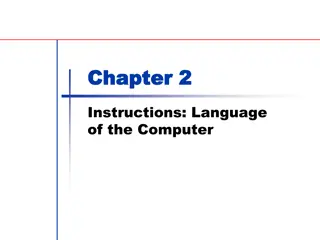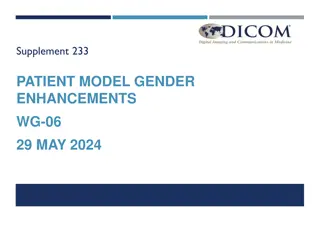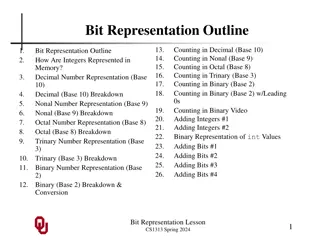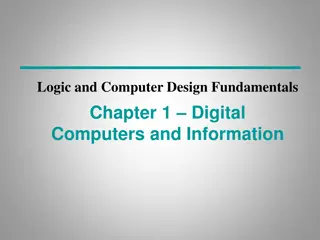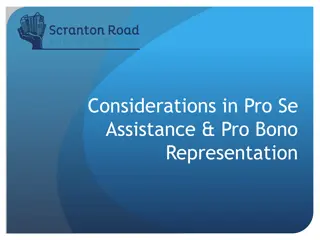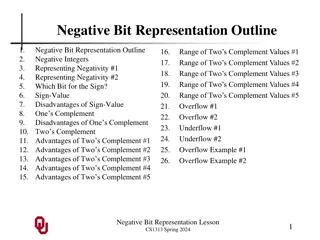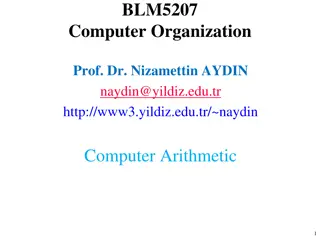Comprehensive Overview of Computer Data Representation and Operations
Delve into the intricate world of computer data representation and micro-operations, covering topics such as binary, octal, and hexadecimal number systems, complements, fixed-point and floating-point representations, arithmetic and logic micro-operations, register transfer language, and more.
Download Presentation

Please find below an Image/Link to download the presentation.
The content on the website is provided AS IS for your information and personal use only. It may not be sold, licensed, or shared on other websites without obtaining consent from the author.If you encounter any issues during the download, it is possible that the publisher has removed the file from their server.
You are allowed to download the files provided on this website for personal or commercial use, subject to the condition that they are used lawfully. All files are the property of their respective owners.
The content on the website is provided AS IS for your information and personal use only. It may not be sold, licensed, or shared on other websites without obtaining consent from the author.
E N D
Presentation Transcript
3140707 Computer Organization & Architecture Unit-1 Computer Data Representation & Register Transfer and Micro-operations
Topics to be covered Basic computer data types Complements Fixed point representation Floating point representation Register Transfer language Register Transfer Bus and Memory Transfers (Three-State Bus Buffers, Memory Transfer) Arithmetic Micro-Operations Logic Micro-Operations Shift Micro-Operations Arithmetic logical shift unit Unit 1: Data Representation & RTL 2
Basic Computer Data Types Decimal Number System Radix(r) = 10, Number range = 0 - 9 Binary Number System Radix(r) = 2, Number range = 0 - 1 Octal Number System Radix(r) = 8, Number range = 0 - 7 Hexadecimal Number System Radix(r) = 16, Number range = 0 - 9 & A - F Binary Coded Decimal Numbers Unit 1: Data Representation & RTL 3
Complements (r-1) s complement 9 s complement 1 s complement 7 s complement 15 s complement r s complement 10 s complement 2 s complement 8 s complement 16 s complement Unit 1: Data Representation & RTL 4
Fixed Point Representation Integer Representation Signed-magnitude representation 1 s complement representation 2 s complement representation Arithmetic Addition Using 1 s complement Using 2 s complement Arithmetic Subtraction Using 1 s complement Using 2 s complement Unit 1: Data Representation & RTL 5
Floating Point Representation Two parts Mantissa Represents signed fixed-point number Exponent Represents position of the decimal point For example, the decimal number +6132.789 is represented in floating-point with a fraction and an exponent as follows: Fraction Exponent +0.6132789 +04 The value of the exponent indicates that the actual position of the decimal point is four positions to the right of the indicated decimal point in the fraction. Floating-point is always interpreted to represent a number in the following form: m X re Here, m stands for mantissa, e stands for exponent, r means radix. Unit 1: Data Representation & RTL 6
Floating Point Representation Normalization A floating point number is said to be normalized if the most significant digit of the mantissa is nonzero. For example, the decimal number 350 is normalized but 00035 is not. ANSI 32-bit floating point byte format Byte 2 Byte 3 Byte 4 Byte 1 SEEEEEEE S = Sign of Mantissa, E = Exponent bits, M = Mantissa bits Example, 13 = 1101 = 0.1101 x 24 .MMMMMMMM MMMMMMMM MMMMMMMM = 00000100 .11010000 00000000 00000000 Example, -17 = - 10001 = -0.10001 x 25 = 10000101 .10001000 00000000 00000000 Unit 1: Data Representation & RTL 7
Register Transfer Language Unit 1: Data Representation & RTL Darshan Institute of Engineering & Technology
Register Computer Registers are designated by capital letters. For example, MAR Memory Address Register PC Program Counter IR Instruction Register R1 Processor Register ?1 7 6 5 4 3 2 1 0 Register R Showing individual bits 15 0 15 8 7 0 ?? PC (H) PC (L) Numbering of bits Divided into two parts Unit 1: Data Representation & RTL 9
Microoperations The operations executed on data stored in registers are called microoperations. A microoperation is an elementary operation performed on the information stored in one or more registers. The result of the operation may replace the previous binary information of a register or may be transferred to another register. Example: Shift, count, clear and load Unit 1: Data Representation & RTL 10
Register Transfer Language The symbolic notation used to describe the microoperation transfers among registers is called a register transfer language. The term "register transfer" implies the availability of hardware logic circuits that can perform a stated microoperation and transfer the result of the operation to the same or another register. A register transfer language is a system for expressing in symbolic form the microoperation sequences among the registers of a digital module. Unit 1: Data Representation & RTL 11
Register Transfer Information transfer from one register to another is designated in symbolic form by means of a replacement operator is known as Register Transfer. The statement ?2 ?1 denotes a transfer of the content of register ?1 into register ?2. R1 1 1 0 1 R2 1 1 0 1 Unit 1: Data Representation & RTL 12
Register Transfer with Control Function Normally, we want the transfer to occur only under a predetermined control condition using if-then statement. If (P = 1) then (?2 ?1) where P is a control signal generated in the control section. A control function is a Boolean variable that is equal to 1 or 0. The control function is included in the statement as follows: ? ?2 ?1 t+1 t P Load Control circuit ?2 Clock n ?1 Load Transfer occurs here Unit 1: Data Representation & RTL 13
Bus and Memory Transfers Unit 1: Data Representation & RTL Darshan Institute of Engineering & Technology
Common Bus System for 4 registers A typical digital computer has many registers, and paths must be provided to transfer information from one register to another. The number of wires will be excessive if separate lines are used between each register and all other registers in the system. Register A 3 2 1 0 3 2 1 0 3 2 1 0 Register B Register C Unit 1: Data Representation & RTL 15
Common Bus System for 4 registers A more efficient scheme for transferring information between registers in a multiple-register configuration is a common bus system. A bus structure consists of a set of common lines, one for each bit of a register, through which binary information is transferred one at a time. One way of constructing a common bus system is with multiplexers. The multiplexers select the source register whose binary information is then placed on the bus. Unit 1: Data Representation & RTL 16
Common Bus System for 4 registers 4-line common bus S1 S0 0 0 A2 A0 A1 A3 4 x 1 MUX 3 4 x 1 MUX 2 4 x 1 MUX 1 4 x 1 MUX 0 3 2 1 0 3 2 1 0 3 2 1 0 3 2 1 0 D2 C2 D0 C0 D1 C1 B2 B0 A2 B1 A0 A1 D2D1D0 C2C1C0 A2A1A0 B2B1B0 3 2 1 0 3 2 1 0 3 2 1 0 3 2 1 0 Register D Register C Register A Register B Unit 1: Data Representation & RTL 17
Common Bus System for 4 registers The construction of a bus system for four registers is explained earlier. Each register has four bits, numbered 0 through 3. The bus consists of four 4 x 1 multiplexers each having four data inputs, 0 through 3, and two selection inputs, S1 and S0. The diagram shows that the bits in the same significant position in each register are connected to the data inputs of one multiplexer to form one line of the bus. Unit 1: Data Representation & RTL 18
Common Bus System for 4 registers The two selection lines S1 and S0 are connected to the selection inputs of all four multiplexers. The selection lines choose the four bits of one register and transfer them into the four-line common bus. When S1S0 = 00, the 0 data inputs of all four multiplexers are selected and applied to the outputs that form the bus. This causes the bus lines to receive the content of register A since the outputs of this register are connected to the 0 data inputs of the multiplexers. Unit 1: Data Representation & RTL 19
Common Bus System for 4 registers Table shows the register that is selected by the bus for each of the four possible binary values of the selection lines. S1 0 S0 0 Register Selected A 0 1 1 0 B C 1 1 D Unit 1: Data Representation & RTL 20
Common Bus System for 4 registers In general, a bus system will multiplex k registers of n bits each to produce an n-line common bus. The number of multiplexers needed to construct the bus is equal to n, the number of bits in each register. The size of each multiplexer must be k x 1 since it multiplexes k data lines. For example, a common bus for eight registers of 16 bits requires Multiplexers - 16 of (8 x 1) Select Lines - 3 Unit 1: Data Representation & RTL 21
Tri-state Buffer (3 state Buffer) A three-state gate is a digital circuit that exhibits three states. Two of the states are signals equivalent to logic 1 and 0 as in a conventional gate. The third state is high impedance state which behaves like an open circuit, which means that the output is disconnected and does not have logic significance. Normal Input A Output Y = A if C =1 High-impedance if C = 0 Control Input C Unit 1: Data Representation & RTL 22
Tri-state Buffer (3 state Buffer) The control input determines the output state. When the control input C is equal to 1, the output is enabled and the gate behaves like any conventional buffer, with the output equal to the normal input. When the control input C is 0, the output is disabled and the gate goes to a high-impedance state, regardless of the value in the normal input. Unit 1: Data Representation & RTL 23
Common Bus System using Decoder and Tri-state Buffer Bus line for bit 0 A0 B0 C0 C0 D0 0 1 2 3 1 S1 Select S0 E 0 2 x 4 Decoder 1 Enable Unit 1: Data Representation & RTL 24
Common Bus System using Decoder and Tri-state Buffer The construction of a bus system with three-state buffers is demonstrated in previous figure. The outputs of four buffers are connected together to form a single bus line. The control inputs to the buffers determine which of the four normal inputs will communicate with the bus line. The connected buffers must be controlled so that only one three- state buffer has access to the bus line while all other buffers are maintained in a high impedance state. One way to ensure that no more than one control input is active at any given time is to use a decoder, as shown in the figure: Bus line with three state-buffers. Unit 1: Data Representation & RTL 25
Common Bus System using Decoder and Tri-state Buffer When the enable input of the decoder is 0, all of its four outputs are 0, and the bus line is in a high-impedance state because all four buffers are disabled. When the enable input is active, one of the three-state buffers will be active, depending on the binary value in the select inputs of the decoder. Unit 1: Data Representation & RTL 26
Arithmetic Microoperations Arithmetic microoperations perform arithmetic operations on numeric data stored in registers. Add Microoperation Subtract Microoperation ?3 ?1 + ?2 ?3 ?1 ?2 ?3 ?1 + ?2 + 1 Unit 1: Data Representation & RTL 27
Arithmetic Microoperations Symbolic Designation ?3 ?1 + ?2 Description Contents of ?1 plus ?2 transferred to ?3 Contents of ?1 minus ?2 transferred to ?3 Complement the contents of ?2(1 s complement) 2 s complement the contents of ?2 (negate) ?3 ?1 + ?2 + 1 ?1 plus the 2 s complement of ?2 (subtraction) ?1 ?1 + 1 Increment the content of ?1 by one ?1 ?1 1 Decrement the content of ?1 by one ?3 ?1 ?2 ?2 ?2 ?2 ?2 + 1 Unit 1: Data Representation & RTL 28
Binary Adder The digital circuit that generates the arithmetic sum of two binary numbers of any length is called a binary adder. Example 1 1 1 0 C 1 1 0 1 R1 + 0 1 1 1 R2 1 0 1 0 0 Sum Unit 1: Data Representation & RTL 29
4 bit Binary Adder 0 1 1 1 1 1 0 1 B3 B2 B1 B0 A3 A2 A1 A0 1 1 1 0 C3 C2 C1 C0 FA FA FA FA C4 1 S3 0 S2 1 S1 0 S0 0 1 1 1 0 C 1 1 0 1 0 1 1 1 0 1 0 0 R1 + R2 1 Sum Unit 1: Data Representation & RTL 30
4 bit Binary Adder The binary adder is constructed with full-adder circuits connected in cascade, with the output carry from one full-adder connected to the input carry of the next full-adder. The figure shows the interconnections of four full-adders (FA) to provide a 4-bit binary adder. The augends bits of A and the addend bits of B are designated by subscript numbers from right to left, with subscript 0 denoting the low-order bit. The carries are connected in a chain through the full-adders. The input carry to the binary adder is C0 and the output carry is C4. The S outputs of the full-adders generate the required sum bits. Unit 1: Data Representation & RTL 31
4 bit Binary Adder An n-bit binary adder requires n full-adders. The output carry from each full-adder is connected to the input carry of the next-high-order full-adder. The n data bits for the A inputs come from one register (such as R1), and the n data bits for the B inputs come from another register (such as R2). The sum can be transferred to a third register or to one of the source registers (R1 or R2), replacing its previous content. Unit 1: Data Representation & RTL 32
Binary Adder-Subtractor Add Microoperation Subtract Microoperation ?3 ?1 + ?2 ?3 ?1 ?2 ?3 ?1 + ?2 + 1 The addition and subtraction operations can be combined into one common circuit by including an exclusive-OR gate with each full-adder. Unit 1: Data Representation & RTL 33
4 bit Binary Adder-Subtractor A3 B3 B2 A2 B1 A1 B0 A0 1 0 1 0 1 0 1 0 1 0 M B3 B3 B2 B2 B1 B1 B0 B0 C3 C2 C1 C0 FA FA FA FA C4 S3 S2 S1 S0 Unit 1: Data Representation & RTL 34
4 bit Binary Adder-Subtractor The mode input M controls the operation. when M = 0 the circuit is an Adder when M = 1 the circuit becomes a Subtractor Each exclusive-OR gate receives one input M and other input from B. When M = 0, we have C0 = 0 & B 0 = B The full-adders receive the value of B, the input carry is 0, and the circuit performs A plus B. When M = 1, we have C0 = 1 & B 1 = B The B inputs are all complemented and 1 is added through the input carry. The circuit performs the operation A plus the 2's complement of B. Unit 1: Data Representation & RTL 35
Binary Incrementer The increment microoperation adds one to a number in a register. 0 0 1 C 1 1 0 1 R1 + 1 1 1 1 0 Sum Unit 1: Data Representation & RTL 36
4 bit Binary Incrementer 1 1 0 1 A3 A1 A0 1 A2 0 1 0 x y x y x y x y HA HA HA HA C S C S C S C S C4 0 S3 1 S2 1 S1 1 S0 0 Unit 1: Data Representation & RTL 37
4 bit Binary Incrementer As shown in figure, one of the inputs to the least significant half- adder (HA) is connected to logic-1 and the other input is connected to the least significant bit of the number to be incremented. The output carry from one half-adder is connected to one of the inputs of the next-higher-order half-adder. The circuit receives the four bits from A0 through A3, adds one to it, and generates the incremented output in S0 through S3. The output carry C4 will be 1 only after incrementing binary 1111. This also causes outputsS0 through S3 to go to 0. Unit 1: Data Representation & RTL 38
Arithmetic Circuit The arithmetic micro operations can be implemented in one composite arithmetic circuit. The basic component of an arithmetic circuit is the parallel adder. By controlling the data inputs to the adder, it is possible to obtain different types of arithmetic operations. The output of binary adder is calculated from arithmetic sum. ? = ? + ? + ??? Unit 1: Data Representation & RTL 39
4 bit Arithmetic Circuit Incremented content of A D1 Cout D0 D2 D3 1 C0 C1 C2 C3 C1 C2 C3 C4 FA FA FA FA X0 X1 X2 X3 Y0 Y1 Y2 Y3 0 0 0 0 4 x 1 MUX 3 4 x 1 MUX 3 4 x 1 MUX 3 4 x 1 MUX 3 S1 S0 0 1 2 3 S1 S0 0 1 2 3 S1 S0 0 1 2 3 S1 S0 0 1 2 3 1 1 0 Cin 1 A3 B3 A0 0 B0 A2 B2 A1 B1 S1S0 Unit 1: Data Representation & RTL 40
4 bit Arithmetic Circuit Decrement using 2 s complement 1 1 1 1 1 0 1 1 1 0 1 2 s complement - 1 + 1 1 1 1 1 1 1 0 0 1 1 0 0 Discard carry ????????? = ? + ???? + ? Unit 1: Data Representation & RTL 41
4 bit Arithmetic Circuit Decremented content of A D1 Cout D0 D2 D3 0 C0 C1 C2 C3 C1 C2 C3 C4 FA FA FA FA X0 X1 X2 X3 Y0 Y1 Y2 Y3 1 1 1 1 4 x 1 MUX 3 4 x 1 MUX 3 4 x 1 MUX 3 4 x 1 MUX 3 S1 S0 0 1 2 3 S1 S0 0 1 2 3 S1 S0 0 1 2 3 S1 S0 0 1 2 3 1 0 0 Cin 1 A3 B3 A0 1 B0 A2 B2 A1 B1 S1S0 Unit 1: Data Representation & RTL 42
4 bit Arithmetic Circuit Hardware implementation consists of: 4 full-adder circuits that constitute the 4-bit adder and four multiplexers for choosing different operations. There are two 4-bit inputs A and B. The four inputs from A go directly to the X inputs of the binary adder. Each of the four inputs from B is connected to the data inputs of the multiplexers. The multiplexer s data inputs also receive the complement of B. Unit 1: Data Representation & RTL 43
4 bit Arithmetic Circuit The other two data inputs are connected to logic-0 and logic-1. Logic-0 is a fixed voltage value (0 volts for TTL integrated circuits) Logic-1 signal can be generated through an inverter whose input is 0. The four multiplexers are controlled by two selection inputs, S1 and S0. The input carry Cin goes to the carry input of the FA in the least significant position. The other carries are connected from one stage to the next. 4-bit output D0 D3 Unit 1: Data Representation & RTL 44
4 bit Arithmetic Circuit When S1S0 = 00 If Cin = 0 then D = A + B; Add If Cin = 1 then D = A + B + 1; Add with carry When S1S0 = 01 If Cin = 0 then D = A + B; Subtract with borrow If Cin = 1 then D = A + B + 1; A + 2 s complement of B i.e. A - B Unit 1: Data Representation & RTL 45
4 bit Arithmetic Circuit When S1S0 = 10 Input B is neglected and all 0 s are inserted to Y inputs D = A + 0 + Cin If Cin = 0 then D = A; Transfer A If Cin = 1 then D = A + 1; Increment A When S1S0 = 11 Input B is neglected and all 1 s are inserted to Y inputs D = A - 1 + Cin If Cin = 0 then D = A - 1; 2 s compliment If Cin = 1 then D = A; Transfer A Unit 1: Data Representation & RTL 46
4 bit Arithmetic Circuit Arithmetic Circuit Function S1 0 S0 0 Cin 0 Y D = A + Y + Cin D = A + B Microoperation B Add 0 0 0 1 1 1 1 0 1 1 0 0 1 1 1 0 1 0 1 0 1 B B B 0 0 1 1 D = A + B + 1 D = A + B D = A + B + 1 D = A D = A + 1 D = A 1 D = A Add with carry Subtract with borrow Subtract Transfer Increment A Decrement A Transfer A Unit 1: Data Representation & RTL 47
Logic Microoperations Logic micro operations specify binary operations for strings of bits stored in registers. These operations consider each bit of the register separately and treat them as binary variables. Example ?: ?1 ?1 ?2 1 0 1 0 R1 1 1 0 0 R2 0 1 1 0 R1 after P = 1 Unit 1: Data Representation & RTL 48
16 Logic Microoperations Boolean Function ?0= 0 ?1= ?? ?2= ?? ?3= ? ?4= ? ? ?5= ? ?6= ? ? ?7= ? + ? Microoperation ? 0 Name Clear ? ? ? ? ? ? ? ? AND Transfer A ? ? ? ? ? ? ? ? ? ? ? Transfer B Exclusive-OR OR Unit 1: Data Representation & RTL 49
16 Logic Microoperations Boolean Function ?8= (? + ?) ?9= (? ?) ?10= ? ?11= ? + ? ?12= ? ?13= ? + ? ?14= (??) ?15= 1 Microoperation ? ? ? Name NOR Exclusive-NOR ? ? ? ? ? ? ? ? Complement B ? ? ? ? ? ? ??? 1 s ? ? ? Complement A NAND Set to all 1 s Unit 1: Data Representation & RTL 50





